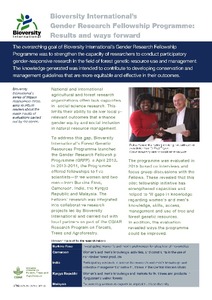plan d'aménagement forestier
AGROVOC URI:
Bois légal: vérification et gouvernance dans le secteur forestier
Capacidades organizativas para el manejo forestal comunitario frente a las demandas y expectativas oficiales
Bridging the gap: communities, forests and international networks
Community forestry has transformed over the past 25 years from being an experimental means of providing wood-fuel for the rural poor to a community-led movement demanding reform of the forestry sector. International networks to promote community forestry, which emerged at very different moments in this history with different visions, goals, targets and participants, have played a key role in this transformation.
Bugis settlers in East Kalimantan’s Kutai National Park: their past and present and some possibilities for their future
What policies should be adopted regarding enclave populations in national parks and other protected areas and how should the policies be implemented? These questions are important for protected areas throughout the world. Andrew P. Vayda and Ahmad Sahur report here on socio-economic and historical research that they conducted in the rapidly industrialising Indonesian province of East Kalimantan to help deal with such questions.
Building agreements among stakeholders
CIFOR facilitated 27 communities in the Upper Malinau watershed to develop agreements about their village boundaries and map them through participatory methods. Decentralization reforms created new values of forest resources and uncertainties that increased conflict over local resources. The authors report on the nature of these conflicts, the stability of agreements and the factors affecting how agreements were reached.
Cambios en los patrones de tenencia en los países en desarrollo
Can we be engineers of property rights to natural resources? some evidence of difficulties from the rural areas of Zimbabwe
The desire for research to be policy relevant has caused many social science studies to have “engineering” dimensions. With respect to the engineering of property rights, economic approaches indicate that we require knowledge regarding the makeup of current property rights structures, how changes to current structures affect the use and management of natural resources, and how property rights have evolved.


